Bethnal Green Hospital
Cambridge Heath Road, Bethnal Green,
E2 9NP
Medical dates:
Medical character:
1900 - 1992
Acute. Later, geriatric
The Bethnal Green Infirmary opened in 1900, built on land
purchased from the London Society for Promoting Christianity amongst
the Jews. The 4.5 acre site had previously contained a chapel -
the Episcopal Jews' Chapel - and had been known as Palestine Place.
The clock from the demolished Chapel was installed on the tower
of the administration block.
The three-storey red brick building was designed to accommodate 669
patients and was intended mainly for the chronically ill (by 1901 it
had 619 in-patients) and this remained so until WW1.
In 1915 civilian in-patients were moved to St George-in-the-East Hospital
or to the workhouse in Waterloo Road and the military authorities took
over the building for wounded soldiers - it became the Bethnal Green
Military Hospital under the London District Command. It had 709
beds for wounded and sick servicemen. During this time a
pathology laboratory was installed.
Only in 1920 did all the patients and staff return. A wider range
of services were added, including an Orthopaedic Clinic, established at the request of the Ministry of Pensions, to provide treatment for ex-servicemen with damaged joints. By 1929 Casualty and X-ray Departments and
admission wards had been opened and an operating theatre was being
constructed. There was also a VD clinic (which closed in 1952).
The LCC took control of the administration in 1930, when the Hospital had 650 beds, of which 551 were occupied.
During WW2 the Hospital suffered minor bomb damage.
In 1948 it joined the NHS as the Bethnal Green Hospital and came under
the control of the Central Group of the North East Metropolitan Region.
By this time it had considerably fewer beds, just over 300.
In 1953 there were 313 beds, with an average occupancy of 260.
A geriatric unit was established in 1954. In the same year the
Group Pathology Laboratory was sited here and served the Central
Group hospitals - Mile End Hospital, St Leonard's Hospital, East End Maternity Hospital, St Matthew's Hospital, Mildmay Mission Hospital, the London Jewish Hospital and the Metropolitan Hospital (all of which have now also closed).
During the 1960s a new dental hospital, a pathology institute and a
School of Nursing and Midwifery were established. In 1966 the
Postgraduate Medical Education Centre opened. In the same year
the Central Group was dissolved and the Hospital joined the East London
Group.
The Obstetrics Department closed in 1972. In yet another NHS
reorganisation in 1974, during the first wave of cutbacks in the NHS,
the Hospital passed to the control of Tower Hamlets District, under the
auspices of the City & East London Area Health Authority. In
the same year the Gynaecology department closed.
From 1977 the role of the Hospital changed from acute to geriatric
care, with 167 acute beds closing and being replaced by 120 geriatric
beds for the patients transferred from St Matthew's Hospital.
Following orders for closure of the Bethnal Green Hospital in
1977, the staff 'occupied' the building as part of a campaign to
protect its future. The administrators moved out, but while
patients remained at the Hospital, the Health Authority was obliged to
pay the staff, and doctors, nurses and other staff continued to perform
their duties.
The surgical beds closed in 1978 and the remaining medical beds in 1979.
In 1990 the Hospital closed. Patients and staff were transferred
to the newly opened Bancroft Unit for the Care of the Elderly at the
Royal London Hospital (Mile End).
|
Present status (December 2007) |
|---|
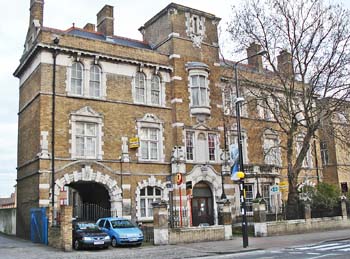
The entrance block once contained the medical officer's residence and office, the dispensary, the chaplain's office, matron's sitting room and bedroom, accommodation for 80 nurses and 12-14 female servants, along with the kitchen, staff dining room and storerooms. The basement was used for storage of coal, firewood and heavy goods.
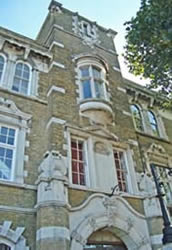
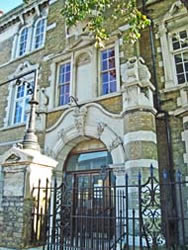
The ornate front elevation of the block alone Cambridge Heath Road.
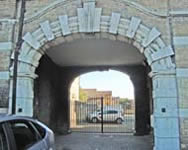

Low-rise, high density social housing has been built on the remainder of the site.
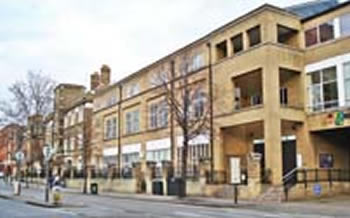
The Cambridge Heath Road frontage showing the old surviving block and a surgery and pharmacy next door.
|
Marcus Garvey (1887-1940), the Jamaican-born black nationalist who created the 'back to Africa' movement in the United States, died and was buried here until his body was returned to Jamaica after the War. |
References
(Author unstated) 1917 List of the various hospitals treating military cases in the United Kingdom. London, H.M.S.O.